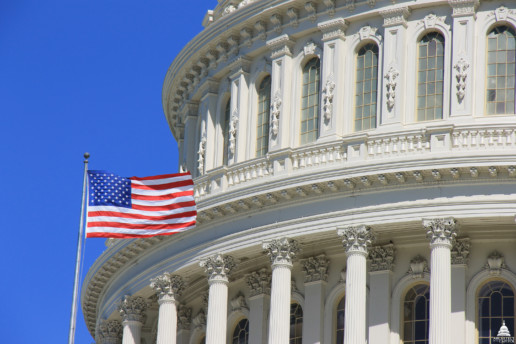The 10 Biggest 401(k) Plan Misconceptions
Do you know everything you need to know about your 401(k)? Check out this great article from Employee Benefit News about the top 10 misconceptions people have about their 401(k)s by Robert C. Lawton.
Unfortunately for plan sponsors, 401(k) plan participants have some big misconceptions about their retirement plan.
Having worked as a 401(k) plan consultant for more than 30 years with some of the most prestigious companies in the world — including Apple, AT&T, IBM, John Deere, Northern Trust, Northwestern Mutual — I’m always surprised by the simple but significant 401(k) plan misconceptions many plan participants have. Following are the most common and noteworthy —all of which employers need to help employees address.
1. I only need to contribute up to the maximum company match
Many participants believe that their company is sending them a message on how much they should contribute. As a result, they only contribute up to the maximum matched contribution percentage. In most plans, that works out to be only 6% in employee contributions. Many studies have indicated that participants need to average at least 15% in contributions each year. To dispel this misperception, and motivate participants to contribute something closer to what they should, plan sponsors should consider stretching their matching contribution.
2. It’s OK to take a participant loan
I have had many participants tell me, “If this were a bad thing why would the company let me do it?” Account leakage via defaulted loans is one of the reasons why some participants never save enough for retirement. In addition, taking a participant loan is a horribleinvestment strategy. Plan participants should first explore taking a home equity loan, where the interest is tax deductible. Plan sponsors should consider curtailing or eliminating their loan provisions.
3. Rolling a 401(k) account into an IRA is a good idea
There are many investment advisers working hard to convince participants this is a good thing to do. However, higher fees, lack of free investment advice, use of higher-cost investment options, lack of availability of stable value and guaranteed fund investment options and many other factors make this a bad idea for most participants.
4. My 401(k) account is a good way to save for college, a first home, etc.
When 401(k) plans were first rolled out to employees decades ago, human resources staff helped persuade skeptical employees to contribute by saying the plans could be used for saving for many different things. They shouldn’t be. It is a bad idea to use a 401(k) plan to save for an initial down payment on a home or to finance a home. Similarly, a 401(k) plan is not the best place to save for a child’s education — 529 plans work much better. Try to eliminate the language in your communication materials that promotes your 401(k) plan as a place to do anything other than save for retirement.
5. I should stop making 401(k) contributions when the stock market crashes
This is a more prevalent feeling among plan participants than you might think. I have had many participants say to me, “Bob, why should I invest my money in the stock market when it is going down. I'm just going to lose money!” These are the same individuals who will be rushing into the stock market at market tops. This logic is important to unravel with participants and something plan sponsors should emphasize in their employee education sessions.
6. Actively trading my 401(k) account will help me maximize my account balance
Trying to time the market, or following newsletters or a trader's advice, is rarely a winning strategy. Consistently adhering to an asset allocation strategy that is appropriate to a participant's age and ability to bear risk is the best approach for most plan participants.
7. Indexing is always superior to active management
Although index investing ensures a low-cost portfolio, it doesn't guarantee superior performance or proper diversification. Access to commodity, real estate and international funds is often sacrificed by many pure indexing strategies. A blend of active and passive investments often proves to be the best investment strategy for plan participants.
8. Target date funds are not good investments
Most experts who say that target date funds are not good investments are not comparing them to a participant's allocations prior to investing in target date funds. Target date funds offer proper age-based diversification. Many participants, before investing in target date funds, may have invested in only one fund or a few funds that were inappropriate risk-wise for their age.
9. Money market funds are good investments
These funds have been guaranteed money losers for a number of years because they have not kept pace with inflation. Unless a participant is five years or less away from retirement or has difficulty taking on even a small amount of risk, these funds are below-average investments. As a result of the new money market fund rules, plan sponsors should offer guaranteed or stable value investment options instead.
10. I can contribute less because I will make my investments will work harder
Many participants have said to me, “Bob, I don’t have to contribute as much as others because I am going to make my investments do more of the work.” Most participants feel that the majority of their final account balance will come from earnings in their 401(k) account. However, studies have shown that the major determinant of how much participants end up with at retirement is the amount of contributions they make, not the amount of earnings. This is another misconception that plan sponsors should work hard to unwind in their employee education sessions.
Make sure you address all of these misconceptions in your next employee education sessions.
See the original article Here.
Source:
Lawton R. (2017 April 4). The 10 biggest 401(k) plan misconceptions[Web blog post]. Retrieved from address https://www.benefitnews.com/opinion/the-10-biggest-401-k-plan-misperceptions?brief=00000152-14a5-d1cc-a5fa-7cff48fe0001
Half of Mature Workers Delaying or Giving Up on Retirement
Did you know that now more than ever Americans are giving up on their dreams of retirement? Find out about the somber facts facing the older generation of workers in the great article from Benefits Pro by Marlene Y. Satter.
It’s a grim picture for older workers: half either plan to postpone retirement till at least age 70, or else to forego retirement altogether.
That’s the depressing conclusion of a recent CareerBuilder survey, which finds that 30 percent of U.S. workers aged 60 or older don’t plan to retire until at least age 70—and possibly not then, either.
Another 20 percent don’t believe they will ever be able to retire.
Why? Well, money—or, rather, the lack of it—is the main reason for all these delays and postponements.
But that doesn’t mean that workers actually have a set financial goal in mind; they just have this sinking feeling that there’s not enough set aside to support them.
Thirty-four percent of survey respondents aged 60 and older say they aren’t sure how much they’ll need to save in order to retire.
And a stunning 24 percent think they’ll be able to get through retirement (and the potential for high medical expenses) on less than $500,000.
Others are estimating higher—some a lot higher—but that probably makes the goal of retirement seem even farther out of reach, with 25 percent believing that the magic number lies somewhere between $500,000–$1,000,000, 13 percent shooting for a figure between $1–2 million, 3 percent looking at $2 million to less than $3 million and (the) 1 percent aiming at $3 million or more.
And if that’s not bad enough, 26 percent of workers 55 and older say they don’t even participate in a 401(k), IRA or other retirement plan.
With 74 percent of respondents 55 and older saying they aren’t making their desired salary, that could play a pretty big part in lack of participation—but that doesn’t mean they’re standing still. Eight percent took on a second job in 2016, and 12 percent plan to change jobs this year.
Predictably, the situation is worse for women. While 54.8 percent of male respondents aged 60+ say they’re postponing retirement, 58.7 percent of women say so.
Asked at which age they think they can retire, the largest groups of both men and women say 65–69, but while 44.9 percent of men say so, just 39.6 percent of women say so.
In addition, 24.4 percent of women peg the 70–74 age range, compared with 21.1 percent of men, and 23.2 percent of women agree with the gloomy statement, “I don’t think I’ll be able to retire”—compared with 18 percent of men.
And no wonder, since while 21.7 percent of men say they’re “not sure” how much they’ll need to retire, 49.3 percent of women are in that category.
Women also don’t participate in retirement plans at the rate that men do, either; 28.3 percent of male respondents say they don’t participate in a 401(k), IRA or other retirement plan, but 35.4 percent of female respondents say they aren’t participating.
For workers in the Midwest, a shocking percentage say they’re delaying retirement: 61.6 percent overall, both men and women, of 60+ workers saying they’re doing so.
Those in the fields of transportation, retail, sales, leisure and hospitality make up the largest percentages of those putting off retirement, at 70.4 percent, 62.5 percent, 62.8 percent and 61.3 percent, respectively. And 46.7 percent overall agree with the statement, “I don’t think I’ll be able to retire.”
Incidentally, 53.2 percent of those in financial services—the largest professional industry group to say so—are not postponing retirement.
They’re followed closely by those in health care, at 50.9 percent—the only other field in which more than half of its workers are planning on retiring on schedule.
And when it comes to participating in retirement plans, some industries see some really outsized participation rates that other industries could only dream of. Among those who work in financial services, for instance, 96.5 percent of respondents say they participate in a 401(k), IRA or comparable retirement plan.
That’s followed by information technology (88.2 percent), energy (87.5 percent), large health care institutions (85.8 percent—smaller health care institutions participate at a rate of 51 percent, while overall in the industry the rate comes to 75.5 percent), government employees (83.6 percent) and manufacturing (80.2 percent).
After that it drops off pretty sharply, and the industry with the lowest participation rate is the leisure and hospitality industry, at just 43.4 percent.
See the original article Here.
Source:
Satter M. (2017 March 31). Half of mature workers delaying or giving up on retirement [Web blog post]. Retrieved from address https://www.benefitspro.com/2017/03/31/half-of-mature-workers-delaying-or-giving-up-on-re?ref=mostpopular&page_all=1
5 Simple Steps Clients Can Take to Boost Workers' Financial Wellness
Are you trying to help your employees increase their financial well-being? Check out these 5 great tips from Employee Benefits Adviser on how to help increase your employees' investment into their financial wellness by Joe Desilva.
Now more than ever, employers offer a wide array of benefits to build engagement and culture within their walls. Healthy snack options adorning the kitchen? Check. Fitness stipends? Check. Competitive work-from-home policies? Check. These are all nice-to-have extras, but employees are increasingly concerned about a more fundamental concern: retirement planning. And it’s here where employers are not providing enough enticing options as they are with the other, flashier perks.
One of the biggest issues employees face as they plan for retirement is economic uncertainty. Only 21% of workers are very confident that they will have enough money for a comfortable retirement, according to the 2016 Employee Benefit Research Institute Retirement Confidence Survey. This should matter to employers because financial uncertainty can have a negative effect on work performance, according to a study by Lockton Retirement Services. The study found that one in five workers reported feeling extremely stressed, mostly because of their job or finances, and those reporting high stress were twice as likely to report poor health overall, leading to more sick days and decreased productivity.
Boosting financial wellness programs not only can help employees’ finances in the long term, it can possibly help employees manage stress and increase productivity in the short term. Employers seem to understand this. In fact, 92% of employer-respondents in a study commissioned by ADP titled Winning with Wellness confirmed interest in providing their workforce with information about retirement planning basics, and 84% said the same of retirement income planning.
Yet, even though many employers appreciate the value of these programs, 32% are not considering implementation. The appetite exists for retirement planning, but the prospects of starting a program appear to be daunting. The truth is, it can be easier than you think.
Here are five simple steps an employer can take to start helping employees find tools and information to help them better manage their finances and grow more confident in their financial futures.
- Teach employees critical planning skills. Experts suggest retirees will need 75%-90% of their working income to live comfortably in retirement. To help employees determine the optimal amount to meet their needs, consider providing them with tools that look at factors such as current annual pre-tax income, estimated Social Security benefit amount, current age and the age they would like to retire, and any retirement savings and project possible retirement savings outcomes. Helping them estimate savings needs and retirement investing now can pay off in the future.
- Offer access to automatic enrollment and auto-escalation features. No matter how well employees do with other investments, the 401(k)’s advantages of tax-deferred growth and a company match is likely unbeatable. By automatically enrolling employees in retirement plans with savings increases, you may be able to position your employees for a more confident financial future.
- Provide resources so employees can seek investment advice from a professional. Employees may want to seek advice on their investments so they will not bear the stress of retirement on their own. There are a lot of options available to employees, but they may not be familiar enough with those options to determine whether or not they’d benefit. Providing access to professional investment advice with respect to retirement accounts may help employees feel confident in their retirement decisions.
- Deliver tools and personalized materials that integrate with real data. Working with a service provider that integrates payroll and recordkeeping data can give a retirement plan the ability to deliver targeted personalized information that employees can use for planning purposes. By delivering relevant information, employees can get engaged and have a better sense of the progress of their retirement planning.
- Make self-learning tools available for honing financial skills anytime, anywhere. A financial wellness program can help employees face their financial decisions with confidence. Most programs offer a library of tools and resources that gives employees access to information about planning, saving, and providing for their home, family and retirement. With financial education, employees may make better financial choices and set realistic goals.
At a time when employee retention is crucial, it’s important to create a support system for employees as they plan their financial futures. With so many workers concerned about retirement security, employers have a clear opportunity to step in and help. Whether it’s enabling employees to save more for retirement or learn about budgeting, financial planning can potentially serve as another popular perk among that list of nice-to-haves.
See the original article Here.
Source:
Desilva J. (2017 March 16). 5 simple steps clients can take to boost workers' financial wellness[Web blog post]. Retrieved from address https://www.employeebenefitadviser.com/opinion/5-simple-steps-clients-can-take-to-boost-workers-financial-wellness
How Employers Should Proceed After the AHCA’s Collapse
Take a look at the great article from Employee Benefits Advisor on what employers need to know about healthcare with the collapse of the AHCA by Alden J. Bianchi and Edward A. Lenz.
The stunning failure of the U.S. House of Representatives to pass the American Health Care Act has political and policy implications that cannot be forecasted. Nor is it clear whether or when the Trump administration and Congress will make another effort to repeal and replace, or whether Republicans will seek Democratic support in an effort to “repair,” the Affordable Care Act. Similarly, we were unable to predict whether and to what extent the AHCA’s provisions can be achieved through executive rulemaking or policy guidance.
Here are some ways the AHCA’s failure could impact employers in the near term.
Immediate impact on employers
Employers were not a major focus of the architects of the ACA, nor were they a major focus of those who crafted the AHCA. This is not surprising. These laws address healthcare systems and structures, especially healthcare financing. Rightly or wrongly, employers have not been viewed by policymakers as major stakeholders on those issues.
In a blog post published at the end of 2014, we made the following observations:
The ACA sits atop a major tectonic plate of the U.S. economy, nearly 18% of which is healthcare-related. Healthcare providers, commercial insurance carriers, and the vast Medicare/Medicaid complex are the law’s primary stakeholders. They, and their local communities, have much to lose or gain depending on how healthcare financing is regulated. The ACA is the way it is largely because of them. Far more than any other circumstance, including which political party controls which branch of government, it is the interests of the ACA’s major stakeholders that determine the law’s future. And there is no indication whatsoever that, from the perspective of these entities, the calculus that drove the ACA’s enactment has changed. U.S. employers, even the largest employers among them, are bit players in this drama. They have little leverage, so they are relegated to complying and grumbling (not necessarily in that order).
With the AHCA’s collapse, the ACA remains the law of the land for the foreseeable future. The AHCA would have zeroed out the penalties on “applicable large” employers that fail to make qualified offers of health coverage, but the bill’s failure leaves the ACA’s “play or pay” rules in full force and effect. The ACA’s reporting rules, which the AHCA would not have changed, also remain in effect. This means, among other things, that many employers, especially those with large numbers of part-time, seasonal, and temporary workers that face unique compliance challenges, will continue to be in the position of “complying and grumbling.”
This does not mean that nothing has changed. The leadership of the Departments of Health and Human Services, Labor and Treasury has changed, and these agencies are now likely to be more employer-friendly. Thus, even though the ACA is still the law, the regulatory tone and tenor may well be different. For example, although the current complex employer reporting rules will remain in effect, the Treasury and IRS might find administrative ways to simplify them. Similarly, any regulations issued under the ACA’s non-discrimination provisions applicable to insured health plans (assuming they are issued at all) likely will be more favorable to employers than those issued under the previous administration.
There are also unanticipated consequences of the AHCA’s failure that employers might applaud. We can think of at least two.
1. Stemming the anticipated tide of new state “play or pay” laws
The continuation of the ACA’s employer mandate likely will put on hold consideration by state and local governments of their own “play or pay” laws.
In anticipation of the repeal of the ACA’s employer mandate, the Governor of Massachusetts recently introduced a budget proposal that would reinstate mandated employer contributions to help cover the costs of increased enrollment in the Medicaid and Children’s Health Insurance Program, known as MassHealth. Under the proposal, employers with 11 or more full-time equivalent employees would have to offer full-time employees a minimum of $4,950 toward the cost of an employer group health plan, or make an annual contribution in lieu of coverage of $2,000 per full-time equivalent employee. While the Governor’s proposal is not explicitly conditioned on repeal of the ACA’s employer mandate, the ACA’s survival may prompt a reconsideration of that approach.
California lawmakers were also considering ACA replacement proposals, including a single-payer bill introduced last month by Democratic state senators Ricardo Lara and Toni Atkins. Had the ACA’s employer mandate been repealed, those proposals were likely just the tip of an iceberg. When the ACA was enacted in 2010, Hawaii, Massachusetts, and San Francisco were the only jurisdictions with their own healthcare mandates on the books. But in the prior two-year period, before President Obama was elected and made healthcare reform his top domestic priority, more than two dozen states had introduced various “fair share” health care reform bills aimed at employers.
Most of the state and local “play or pay” proposals would have required employers to pay a specified percentage of their payroll, or a specified dollar amount, for health care coverage. Some required employers to pay employees a supplemental hourly “health care” wage in addition to their regular wages or provide health benefits of at least equal value. California, Illinois, Pennsylvania, and Wisconsin considered single-payer proposals.
To be sure, any state or local “play or pay” mandates would be subject to challenge based on Federal preemption under the Employee Retirement Income Security Act (ERISA). While some previous “play or pay” laws were invalidated under ERISA (e.g., Maryland), others (i.e., San Francisco) were not. In sum, given the failure of the AHCA, there would appear to be no rationale, at least for now, for any new state or local “play or pay” laws to go forward.
2. Avoiding upward pressure on employer premiums as a result of Medicaid reforms
The AHCA proposed to reform Medicaid by giving greater power to the states to administer the Medicaid program. Under an approach that caps Medicaid spending, the law would have provided for “per capita allotments” and “block grants.” Under either approach, the Congressional Budget Office, in its scoring of the AHCA, predicted that far fewer individuals would be eligible for Medicaid.
According to the CBO: CBO and JCT estimate that enacting the legislation would reduce federal deficits by $337 billion over the 2017 to 2026 periods. That total consists of $323 billion in on-budget savings and $13 billion in off-budget savings. Outlays would be reduced by $1.2 trillion over the period, and revenues would be reduced by $0.9 trillion. The largest savings would come from reductions in outlays for Medicaid and from the elimination of the ACA’s subsidies for non-group health insurance.
While employers rarely pay attention to Medicaid, the AHCA gave them a reason to do so. Fewer Medicaid-eligible individuals would mean more uncompensated care — a significant portion of the costs of which would likely be passed on to employers in the form of higher premiums. As long as the ACA’s expanded Medicaid coverage provisions remain in place, premium pressure on employers will to that extent be avoided.
Long-term impact on employers
As we conceded at the beginning, it’s not clear how the Republican Congress and the Administration will react to the AHCA’s failure. If the elected representatives of both political parties are inclined to try to make the current system work, however, we can think of no better place that the prescriptions contained in a report by the American Academy of Actuaries, entitled “An Evaluation of the Individual Health Insurance Market and Implications of Potential Changes.”
The actuaries’ report does not address, much less resolve, the major policy differences between the ACA and the AHCA over the role of government — in particular, the extent to which taxpayers should be called on to fund the health care costs of low-and moderate-income individuals, and whether U.S. citizens should be required to maintain health coverage or pay a penalty. And even if lawmakers can reach consensus on those contentious issues, they still would have to agree on the proper implementing mechanisms.
But whatever the outcome, employers are unlikely to play a major role.
See the original article Here.
Source:
Bianchi A. & Lenz E. (2017 April 6). How employers should proceed after the AHCA's collapse [Web blog post]. Retrieved from address https://www.employeebenefitadviser.com/opinion/how-employers-should-proceed-after-the-ahcas-collapse
HSAs to see explosive growth
Are you using HSAs to help save money on your healthcare cost? Find out from this article by Employee Benefit News on how the market for HSAs is set to grow exponentially over the next few years by Kathryn Mayer.
It’s about time for health savings accounts to take the spotlight. And that’s going to be a good thing for employees, industry experts say: Not only will HSAs help workers with their healthcare expenses, but the savings vehicles also will put them on a better track for retirement planning.
“The market is going to blow up,” American Retirement Association CEO Brian Graff said this week during the NAPA 401k Summit in Las Vegas, citing new healthcare reform proposals — including the GOP’s American Health Care Act — as well as a better understand of HSAs as reasons for the predicted growth.
The ACHA, which doubles HSA contributions, “dramatically increases the incentive for employers to offer high-deductible health plans,” he said. The GOP plan expands the allowable size of healthcare savings accounts that can be coupled with high-deductible insurance plans, up to $6,550 for an individual or $13,100 for a family. It also expands qualifying expenses to include health insurance premiums, over-the-counter medications and preventive health costs.
By 2018, there will be 27 million HSA accounts and more than $50 billion in HSA assets, according to estimates from the Kaiser Family Foundation cited by Graff. Currently, there are 18 million accounts and $34.7 billion in assets.
Those statistics — and proposed healthcare reforms — are catching the eye of the retirement industry: The accounts have the potential to become “more compelling than a 401(k),” due to tax-deductible and tax-deferred incentives, Graff said.
“We have to think about what this means for our industry,” he said.
In a live poll during a conference keynote, three-quarters of retirement advisers noted they do not offer HSA advisory services. That number, Graff predicts, will change radically over the next two years.
Current proposals are positioning HSAs a hybrid of medical and retirement savings, Graff said. “It’s not just a health account, it’s a savings account.” Healthcare expenses are a major concern for retirees and often cause employees to push back plans for retirement. If HSA funds are not needed for medical expenses, the money can be withdrawn after age 65 and taxed as ordinary income.
Graff says plan sponsors and retirement advisers should encourage employees to first max out their HSAs and then match their 401(k)s.
The HSA is “the nexus between healthcare and retirement,” Daniel Bryant, an advisor with Sheridan Road, said during a standing-room only panel on HSAs Monday.
Meanwhile, added panelist Ryan Tiernan, a national accounts manager with American Funds, “it’s the biggest jump ball no one has cared to jump to. HSAs are probably the most efficient way to save and invest for your biggest expense in retirement.”
See the original article Here.
Expert: The staggering new retirement savings number millennials have to hit
Have your millennial workers started saving for retirement? If not take a look at this great article from HR Morning about the amount of money millennials need to save for retirement by Christian Schappel.
Want to jolt your younger workers into contributing more to your company-sponsored retirement plans? Just show them this figure.
After looking at several studies, estimates and financial experts’ opinions, Robert Powell, USA Today’s retirement planning expert and editor of Retirement Weekly, is predicting that millennials will need upwards of $2.5 million saved to comfortably retire.
That estimate is for the youngest millennials — those born in the late 1990s.
The news isn’t quite as bleak for those born in the 1980s. Their retirement savings goal, according to Powell: $1.8M.
Why so much?
Here are the numbers behind the estimates.
Powell’s assuming millennials will need to live on between $30K and $40K annually in retirement (in today’s dollars).
Plus, a modest rate of inflation (2%) will make $1M of today’s dollars worth about $530K in 32 years, and roughly just $386K in 48 years.
You can see Powell’s breakdown in more detail here.
The bottom line is this: For today’s millennials to hit that $2.5M number in 48 years, Powell said they’d need to save about $1,000 per month — and that’s assuming there’s 5% growth on their investments annually. That’s a staggering amount that, most likely, your employees aren’t coming close to hitting.
Still, every little bit helps. And if these figures can encourage employees to increase their savings even a little, they’ve done their job.
See the original article Here.
Source:
Schappel C. (2017 February 23). Expert: the staggering new retirement savings number millennials have to hit [Web blog post]. Retrieved from address https://www.hrmorning.com/expert-the-staggering-new-retirement-savings-number-millennials-have-to-hit/
Debt should be priority in financial wellness programs
Do you know what your employees prioritize in their financial wellness program? Take a look at this article from Employee Benefits News about how more employees are placing debt as their number one priority in their financial wellness plans by Kathryn Mayer.
As research continues to pile up about employees’ dire financial state, many employers are left wondering how best to help their workers become financially stable.
Step one? Help them get rid of debt.
“Debt is the biggest [financial well-being] issue right now,” Meghan Murphy, director of thought leadership at Fidelity Investments, said Tuesday during the NAPA 401k Summit in Las Vegas. “Debt is becoming a way of life for all generations.”
There’s a “huge focus” for employers to take action right now in helping employees pay down student loans, Murphy said. It’s an issue plaguing everyone from millennials entering the workforce with massive amounts of debt to baby boomers who have their own student loans and are looking to finance their children’s education as well.
“Not only is [student loan repayment] great for retention, but it makes employees feel great,” she said.
Though student loan debt is garnering more attention in the workforce, it should not be the only area of focus, she said. Credit card debt, 401(k) loans and mortgage loans should also be priorities. In particular, many employers are beginning to put plans in place for ways to manage 401(k) loans by limiting the number of loans allowed or putting a waiting period in place for employees to get the money. “People are very attached to the concept that they can have the money if needed, but we have to find a way to stop that.
“A lot of education is needed in the workplace with debt — student loan debt, credit card debt … there’s not a single focus. If [employees] can pay down debt in general, [they] can save more. Even if employees can save a little bit, with whatever tools we can build and whatever tools and engagement employers offer, that would go a long way.”
Emergency savings also should be a big area of focus for financial wellness,” Murphy said. According to Fidelity’s research, employees do not think long term when it comes to financial goals; 27% of employees only think about the next few months when it comes to money. People who lack emergency savings are twice as likely to say they do not feel good about their finances, Murphy added.
“Most people don’t have an emergency savings account, and most people who do are afraid to spend it,” she said.
What the industry should do — and is starting to do — is to come up with ways to automate emergency savings, similar to automating retirement accounts savings.
Overall, employees’ financial state is pretty dire, Murphy said, citing Fidelity Investment research. In addition to meager savings, financial stress is wreaking havoc in the workplace. More than half of millennials say they’re less committed to work when experiencing money problems, and 28% say they are distracted at work because of it. Another 24% of workers say they avoid medical treatment due to financial problems.
“It’s all very cyclical,” Murphy said. “If you have a health issue, it can impact your money; it can impact your job. If you have a money issue, it can impact your health; it can impact your job. And it all impacts our happiness.”
The overall takeaway is financial wellness is needed in a big way.
“Employees really, really want help to make financial decisions and employers are starting to step up to take this role,” she said.
See the original article Here.
Source:
Mayer K. (2017 March 21). Debt should be priority in financial wellness programs [Web blog post]. Retrieved from address https://www.benefitnews.com/news/debt-should-be-priority-in-financial-wellness-programs?tag=00000151-16d0-def7-a1db-97f03c840000
Late Move To Dump ‘Essential’ Benefits Could Strand Chronically Ill
Are you worried about your health benefits will change with the passing of the AHCA? Take a look at this article by Jay Hancock from Kaiser Health News and find out how your 'essential' benefits could be cut with the passing of the AHCA.
A last-minute attempt by conservative Republicans to dump standards for health benefitsin plans sold to individuals would probably lower the average consumer’s upfront insurance costs, such as premiums and deductibles, said experts on both sides of the debate to repeal and replace the Affordable Care Act.
But, they add, it will likely also induce insurers to offer much skimpier plans, potentially excluding the gravely ill, and putting consumers at greater financial risk if they need care.
For example, a woman who had elected not to have maternity coverage could face financial ruin from an unintended pregnancy. A healthy young man who didn’t buy drug coverage could be bankrupted if diagnosed with cancer requiring expensive prescription medicine. Someone needing emergency treatment at a non-network hospital might not be covered.
What might be desirable for business would leave patients vulnerable.
“What you don’t want if you’re an insurer is only sick people buying whatever product you have,” said Christopher Koller, president of the Milbank Memorial Fund and a former Rhode Island insurance commissioner. “So the way to get healthy people is to offer cheaper products designed for the healthy people.”
Such a change could give carriers wide room to do that by eliminating or shrinking “essential health benefits” including hospitalization, prescription drugs, mental health treatment and lab services from plan requirements — especially if state regulators don’t step in to fill the void, analysts said.
As part of the push by House GOP leaders to gain more support for their plan, they amended the bill Thursday to allow states to decide, starting next year, what if any benefits insurers must provide on the individual market, rather than requiring health plans to include the law’s essential health benefits, according to House Ways and Means Chairman Kevin Brady (R-Texas).
The Affordable Care Act requires companies selling coverage to individuals and families through online marketplaces to offer 10 essential benefits, which also include maternity, wellness and preventive services — plus emergency room treatment at all hospitals. Small-group plans offered by many small employers also must carry such benefits.
Conservative House Republicans want to exclude the rule from any replacement, arguing it drives up cost and stifles consumer choice.
On Thursday, President Donald Trump agreed after meeting with members of the conservative Freedom Caucus to leave it out of the measure under consideration, said White House Press Secretary Sean Spicer. “Part of the reason that premiums have spiked out of control is because under Obamacare, there were these mandated services that had to be included,” Spicer told reporters.
Pushed by Trump, House Republican leaders agreed late Thursday to a Friday vote on the bill but were still trying to line up support. “Tomorrow we will show the American people that we will repeal and replace this broken law because it’s collapsing and it’s failing families,” said House Speaker Paul Ryan (R-Wis.). “And tomorrow we’re proceeding.” When asked if he had the votes, Ryan didn’t answer and walked briskly away from the press corps.
But axing essential benefits could bring back the pre-ACA days when insurers avoided expensive patients by excluding services they needed, said Gary Claxton, a vice president and insurance expert at the Kaiser Family Foundation. (Kaiser Health News is an editorially independent program of the foundation.)
“They’re not going to offer benefits that attract people with chronic illness if they can help it,” said Claxton, whose collection of old insurance policies shows what the market looked like before.
One Aetna plan didn’t cover most mental health or addiction services — important to moderate Republicans as well as Democrats concerned about fighting the opioid crisis. Another Aetna plan didn’t cover any mental health treatment. A HealthNet plan didn’t cover outpatient rehabilitative services.
Before the ACA most individual plans didn’t include maternity coverage, either.
The House replacement bill could make individual coverage for the chronically ill even more scarce than a few years ago because it retains an ACA rule that forces plans to accept members with preexisting illness, analysts said.
Before President Barack Obama’s health overhaul, insurers could reject sick applicants or charge them higher premiums.
Lacking that ability under a Republican law but newly able to shrink benefits, insurers might be more tempted than ever to avoid covering expensive conditions. That way the sickest consumers wouldn’t even bother to apply.
“You could see even worse holes in the insurance package” than before the ACA, said Sabrina Corlette, a research professor at the Center on Health Insurance Reforms at Georgetown University. “If we’re going into a world where a carrier is going to have to accept all comers and they can’t charge them based on their health status, the benefit design becomes a much bigger deal” in how insurers keep the sick out of their plans, she said.
Michael Cannon, an analyst at the libertarian Cato Institute and a longtime Obamacare opponent, also believes dumping essential benefits while forcing insurers to accept all applicants at one “community” price would weaken coverage for chronically ill people.
“Getting rid of the essential health benefits in a community-rated market would cause coverage for the sick to get even worse than it is under current law,” he said. Republicans “are shooting themselves in the foot if they the offer this proposal.”
Cannon favors full repeal of the ACA, allowing insurers to charge higher premiums for more expensive patients and helping consumers pay for plans with tax-favored health savings accounts.
In an absence of federal requirements for benefits, existing state standards would become more important. Some states might move to upgrade required benefits in line with the ACA rules but others probably won’t, according to analysts.
“You’re going to have a lot of insurers in states trying to understand what existing laws they have in place,” Koller said. “It’s going to be really critical to see how quickly the states react. There are going to be some states that will not.”
See the original article Here.
Source:
Hancok J. (2017 March 24). Late move to dump 'essential' benefits could strand chronically ill [Web blog post]. Retrieved from address https://khn.org/news/late-move-to-dump-essential-benefits-could-strand-chronically-ill/
7 wellness benefits to maintain employees' zen
Check out the top trends that employees are looking for in an employer wellness programs by Page Elliott.
With open enrollment in the rearview mirror, many benefits professionals have been able to see which new wellness benefits have been a hit and which have been a miss. Increasingly, employees expect the benefits on offer to go beyond physical health and exercise and extend into a broader concept of wellness.
Meeting this appetite can benefit employers significantly -- research has shown happier employees are considerably more productive.
The industry has answered the call in recent years and employers and brokers are bringing more and more benefits to the table that offer employees tools to better navigate their lives domestically, at work and in general.
Here are the top seven benefits to consider for upcoming enrollment periods that help look after employees personal well-being beyond the purely physical.
Legal protection
There are a multitude of reasons why employees often require costly legal representation: divorce, financial woes, neighborly disputes, property transactions, estate planning, etc. For most employees the costs and time required to attend to these issues are financially and emotionally draining.
The added stress created can cause a substantial loss in productivity in the workplace. As such, legal protection benefits are increasingly seen as an important step to keep a company’s workforce well and thriving.
According to a 2016 survey by Willis Towers Watson, 59 percent of employers now offer legal plans as a voluntary benefit.
Financial coaching
According to a study by Northwestern Mutual, some 58 percent of Americans believe their financial planning needs improvement and money remains the leading cause of stress in America today.
Offering financial coaching can be a bedrock voluntary benefit for employers given that it is central to protecting employees from falling into the kind of dire straits where other benefits like legal protection need to be used.
Financial coaching can help employees with everything from building a monthly budget that gets them back in the black, to planning their college fund or retirement saving more carefully. Financial coaching as an employee benefit can help employees thrive instead of just survive.
Identity theft resolution and monitoring
Identity theft is fast becoming the third certainty in life -- according to the Bureau of Justice Statistics, nearly 18 million people fell victim to identity theft in 2014 (that’s seven percent of U.S. adults in just one year).
Identity theft leads to financial and healthcare fraud that can be a crippling mess for victims to unravel and take many years (and many work hours!). The emotional effects of identity theft are well documented and easy to understand: anger, frustration and feelings of violation and vulnerability and the corresponding impact on wellness are clear.
Identity theft remediation and monitoring services can provide employees with critical resources to handle the frustrating complexities of rectifying fraud conducted using their own identities.
Health advocacy benefits
While a healthy chunk of all our paychecks goes towards paying for our health care insurance and services -- a fiendishly complex and constantly evolving ecosystem -- many Americans don’t understand the most basic terms.
Health advocacy has been a growing voluntary benefit over the last few years because it can help employees navigate a complex and exhausting system, offering both administrative and even clinical support. Health advocacy can reduce employee anxiety, improve overall wellness through better heath decisions and also help consumers get a better financial deal from their health care choices.
Meditation services
Research indicates that meditation has substantial benefits in terms of encouraging better attention, memory and emotional intelligence (and who couldn’t use some more of each on a daily basis?)
Mindfulness has been a top topic for HR pros for a long time, and many have made big strides in incorporating this concept into corporate culture. This has included encouraging employees to try extra-curricular relaxation techniques like yoga and meditation.
Some companies have gone as far as offering apps like Headspace to employees as a voluntary benefit at low or no cost.
Relationship counseling
The prevailing wisdom relating to employees’ personal problems has always been stay well out of it. However, more and more companies are seeing the upside of providing assistance to employees without getting directly involved in their personal lives.
One increasingly popular method for helping people manage the conflicts that exist in their lives outside of the office is to offer relationship counseling. While this remains a rarity on most voluntary benefits portals, expect to see this popping up more and more in subsequent open enrollment periods.
Child care assistance
According to a survey by Care.com, over 70 percent of employees say the cost of childcare impacts their career decisions. Not wildly surprising given that nearly a third of families pay in excess of $20,000 per annum for child care -- a figure that represents a shockingly high portion of the average U.S. household income of around $52,000.
Related: Are you ready for the millennial baby boom?
Offering dependent care deduction has been a popular benefit for a number of years and more and more parents are taking this up as part of their flex spending arrangements. Assistance can go beyond the tax break though and a growing number of companies are offering services that can make managing child care vastly easier, including child care resource and referral services that can help with back-up arrangements when daycare centers are closed.
See the original article Here.
Source:
Elliott P. (2017 March 21). 7 wellness benefits to maintain employees' zen[Web blog post]. Retrieved from address https://www.benefitspro.com/2017/03/21/7-wellness-benefits-to-maintain-employees-zen?kw=7+wellness+benefits+to+maintain+employees%27+zen&et=editorial&bu=BenefitsPRO&cn=20170326&src=EMC-Email_editorial&pt=Benefits+Weekend+PRO&page_all=1
Financial stress hurts emotional, physical well-being of workers
Did you know that your emotional and physical well-being can take a hit when you are under financial stress? Here is an interesting article from Employee Benefits Advisors about the correlation between financial stress and mental and physical health by Amanda Eisenberg.
Americans aren’t able to save for their financial goals, and that stress is affecting their emotional and physical well-being.
A new study by Guardian Life Insurance found that financial outlook is the most significant driver of working Americans’ overall well-being, constituting 40% of the insurance company’s Workforce Well-Being Index, and money is cited as the No. 1 source of stress for a majority of workers.
“Even among people working full-time with benefits, many still do not have access to adequate insurance coverage or retirement plans,” says Dave Mahder, vice president and chief marketing officer of Guardian’s Group and Worksite Markets business. “And few take advantage of the health and wellness programs available through their employers, which often contain a much broader menu of resources than workers realize.”
Millennials are one of the subsets of employees who do participate in benefits that can help alleviate financial stress, the survey found.
“Millennials want marketing to them,” says Gene Lanzoni, assistant vice president of thought leadership for Guardian Life. “It’s not enough these days to say, “This is someone like you,” to do with your benefit selection. That’s what the challenge is for millennials. It’s not enough of an engaging process for them.”
Half of millennials surveyed in Guardian Life’s “Fourth Annual Guardian Workplace Benefits Study” said they don’t have disability insurance, while a third have yet to sign up for a retirement plan.
They are not the only group of employees struggling to purchase voluntary benefits like disability and life insurance; single working parents are also feeling the heat.
One in three single working parents does not have a retirement plan, compared to 20% of the 1,439 workers surveyed. Similarly, one in four workers doesn’t have life insurance, and one in three workers doesn’t have disability insurance, according to the survey.
“Many of those working parents are struggling to balance work and personal life, and they may not be able to afford some of the protection products,” says Lanzoni. “Some of that discretionary income might not go toward paying a voluntary disability plan.”
To offset expenses, Americans are increasingly turning to debt, whether through loans or credit cards, to temporarily relieve their financial burdens.
Four in 10 Americans have car loans, 32% of workers are carrying a mortgage, 17% have student loans and 12% have home improvement debt, according to the study. Overall, 75% of Americans are carrying debt.
Non-mortgage debt — particularly auto and education loans — contributes to lower financial wellness; those carrying the most total debt, including mortgages and rent, report considerably lower overall well-being, according to Guardian Life’s report.
Employers can also help alleviate the burden by providing education to employees, among other services, says Lanzoni.
The survey found that employer-sponsored voluntary insurance products and college tuition or loan repayment programs help with financial wellness, as well as employee assistance programs that can identify financial, emotional and physical issues that lead to stress.
See the original article Here.
Source:
Eisenberg A. (2017 March 13). Financial stress hurts emotional, physical well-being of workers [Web blog post]. Retrieved from address https://www.employeebenefitadviser.com/news/financial-stress-hurts-emotional-physical-well-being-of-workers?feed=00000152-1387-d1cc-a5fa-7fffaf8f0000









